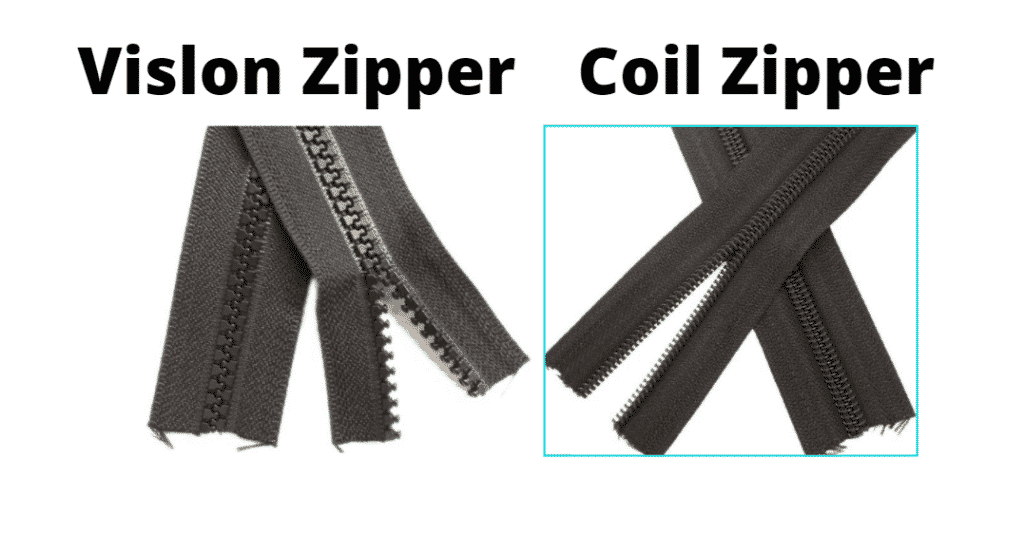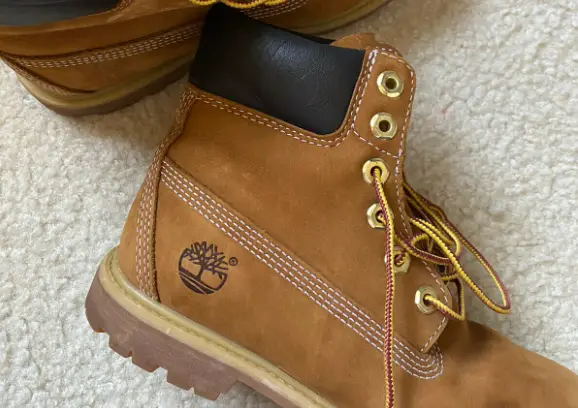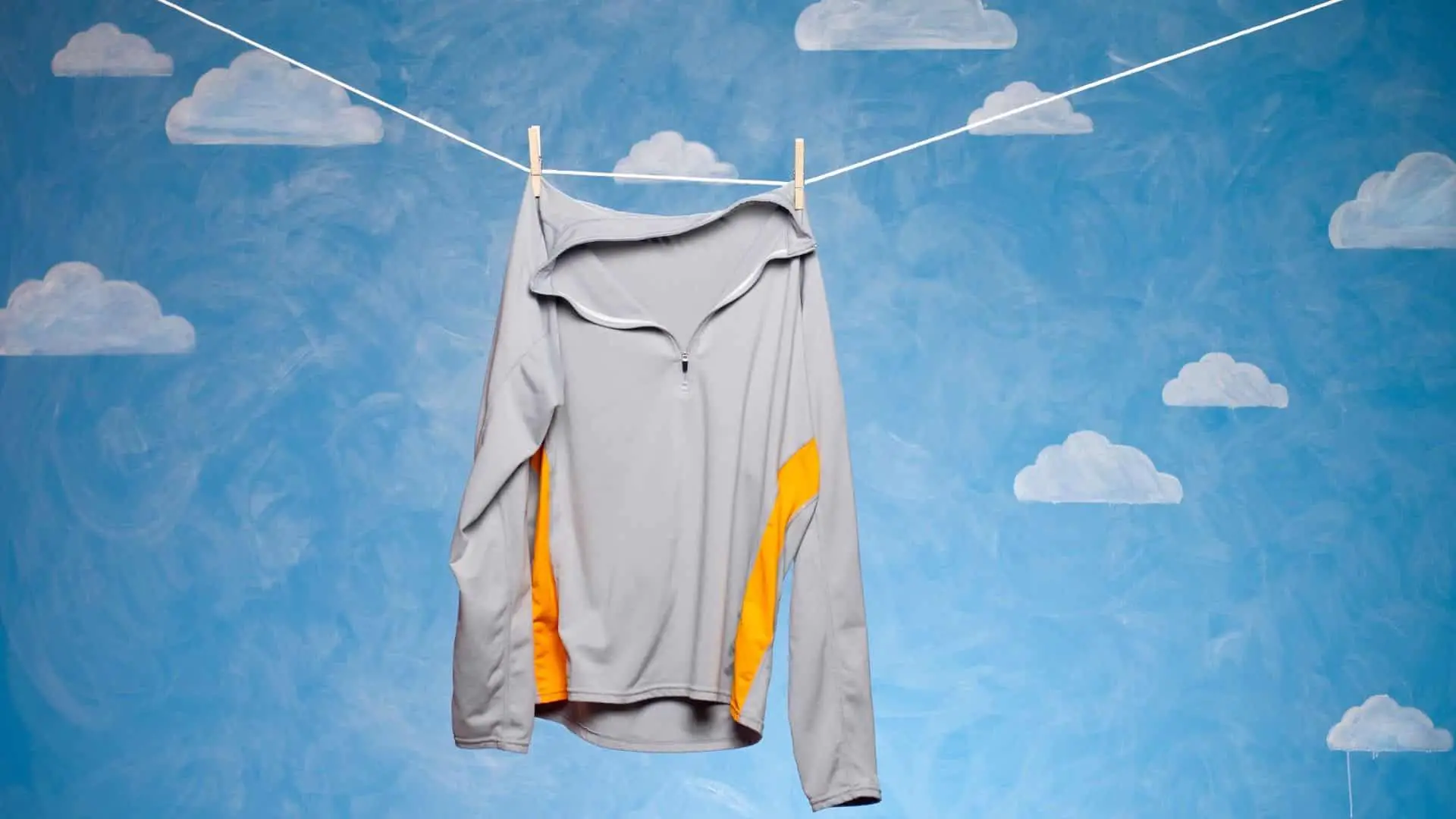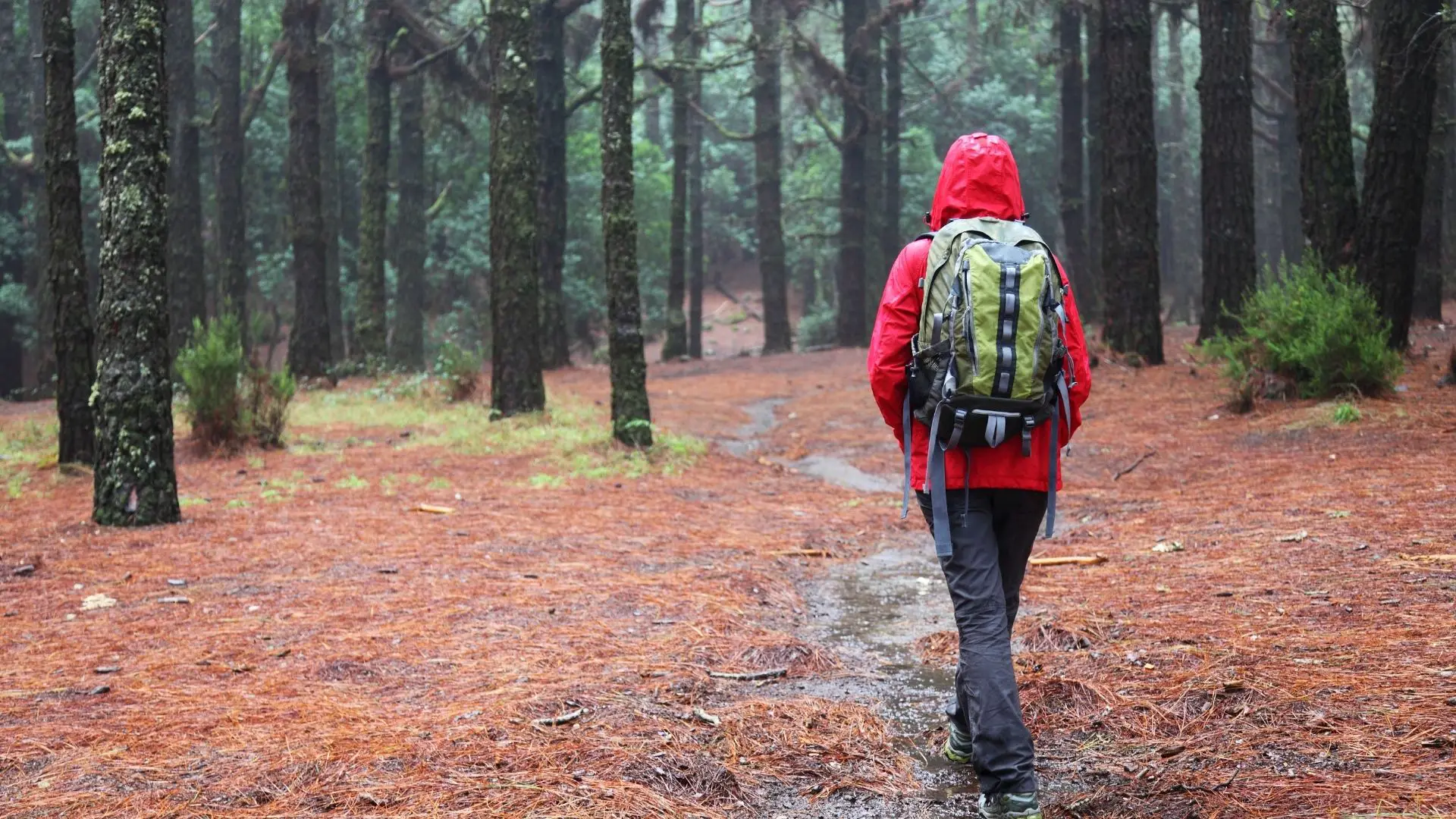Dealing with a broke or stuck backpack zipper can be seriously annoying. The zipper pops open randomly or they just feel impossible to zip. Luckily, there are easy ways to lubricate or fix a broken zipper, but it’s important to understand what caused them to break in the first place. So we need to ask ourself a simple question: Why do backpack zippers break?
Backpack zippers break because of damage to the slider or zipper teeth. The zipper is hard to open or the teeth pull apart under stress. This is usually caused by debris like sand or fabric getting jammed in the zipper, overloaded packs, or undersized/wrong types of zippers. Debris can be removed with cleaning/lubrication agents, or you can fix the broken zipper by replacing the slider or sewing in new zipper tape.
How do I know if I have a broken zipper or it needs to be cleaned and lubricated? Start by cleaning the zipper with Gear Aid Zipper Cleaner and Lubricant to see if that helps. It should clean out all the gunk making the zipper easier to pull. If that doesn’t help you probably have a broken slider. Keep reading to learn how to size and replace every part of the zipper and slider. There’s a handy video at the end of this post explaining how to fix your zipper.
Why Do Backpack Zippers Break?

Backpack zippers are by far the weakest point on your pack. I can count on one hand how many times I’ve torn through a pack, but it seems like I need to replace my zipper every 2-3 years. Even high quality zippers will eventually need to be replaced, but there are ways to prevent premature wear. I’ll go over a few to extend the life of your zipper below, but first lets go over the most common reasons why zippers break.
- Broken Slide: The slider is by far the most common thing to get damaged on your pack. A slider’s body can get smashed or pulled open so it won’t function properly. This is usually caused by fabric getting stuck in the zipper or the slider getting smashed up against something heavy. You can usually adjust it by bending the body with pliers, but you may need to replace it if the same problem keeps popping up. Check the number on the back of the slider and use a zipper rescue repair kit to replace it. There’s a video lower in this post that gives a brief demonstration on replacing sliders.
- Heavy Pack Loads: Most multi-day backpacks have an ideal load capacity of 30-40lbs but they can technically carry a maximum of 60-70lbs. That would be a ridiculous amount to carry on a backpacking trip, but we’re talking about maximum loads here. Carrying 60-70lbs in a pack will pull on the zipper as the load settles and slowly tear away at the seams and zipper teeth. After a while the zipper will pull apart and you will need to install a new zipper. If you plan on carrying ridiculous loads I highly consider upgrading to a bigger #8 zipper.
- Debris In the Zipper Teeth (sand/fabric): Most backpacks use coil zippers, because they’re more flexible than traditional zippers. That malleability allows the zipper to eat through debris like sand, dirt, and fabric that gets stuck in the zipper without pulling the teeth apart. Malleability allows the zipper to self-heal, but lots of debris will eventually cause irreparable damage. Teeth will bend, sliders will open up, and you’ll have to replace the zipper.
- Wrong Type Of Zipper: Some manufacturers try to cut costs by using undersized zippers (like a #3). That’s usually fine on day packs where you rarely carry anything heavy, but there should be a much bigger zipper in a multi-day backpack. Ideally your pack should have an oversized #8 zipper on the main pocket and #5 zippers on all smaller pockets/compartments. A #5 zipper is fine on smaller weekend packs, but you want something bigger on 60-70 liter pack.
- Bent Teeth: Coil zipper teeth are designed so they can bend around jams and debris. That’s great in the short term, but the teeth will eventually wear down and fail. A zipper that pulls apart when you try to zip it up most likely has damaged teeth. This is the perfect time to upgrade to a sturdier #8 or #10 zipper that’s less likely to pull apart. Replacing a zipper isn’t that big of a deal since it’s cheap to buy (check on Amazon) and easy to do. It’s a quick DIY job, but a tailor will replace your zipper for about $20.
Trying to understand what caused your zipper to fail will help you prevent the same thing from happening in the future. I’ll go over some simple maintenance techniques below to clean out your zipper and lube it up to prevent damage.
How To Clean and Maintain Backpack Zippers
Sand is the mortal enemy of backpack zippers. It gets trapped between the teeth and before long you won’t be able to move the slider back and forth. The teeth may also get stuck open leaving a gap in the zipper that will come apart under light tension.
It might sound strange, but the plastic teeth aren’t the weak point in the zipper. The steel slider will wear down much faster than the teeth. A slider is constantly moving back and forth over the zipper and will eventually grind down. Backpacks with multiple sliders should have zippers that last much longer than single slider packs.
Using a sandy zipper will quickly eat away at the zippers structural integrity. You need to clean the zipper regularly if you don’t want to replace it every 2-3 years. This is especially important when backpacking in sandy areas. I like to clean out and lubricate my zipper at the beginning and midway through every camping season.
If you want to make your zippers last, you should clean the zippers every 2-3 trips using Gear Aid Zipper Cleaner and Lubricant. It takes 30 seconds to apply and instantly improves the way the zipper slides. You probably won’t even have to replace the zipper after applying the lubricant. It should clean out most of the gunk and lube up the threads to break/prevent any jams.
Don’t try using a wet lubricant like WD-40 on your zipper. Almost everybody makes this mistake and has to deal with the consequences. All it does is attract sand and dirt making things much worse.
If cleaning and lubricating the zipper doesn’t help you probably need to adjust or replace the slider. Try to adjust the slider body using plyers to open or close it. If that doesn’t work you’ll need to replace the slider. There’s a video later on in this post that explains the replacement process.
Coil vs Vislon Backpack Zippers

The vast majority of backpacks use coil zippers which are designed to flex around jams and can handle a heavier pack load. There are probably packs that use cheap vislon zippers, but I’ve never seen one. Vislon zippers jam easily and can’t handle the stress/movement of a heavy pack load.
It’s really easy to tell the difference between a vislon and coil zipper. The picture above gives you a good visual representation of both styles. Just look at the zippers teeth and see how they’re arranged. Vislon zippers have loose interlocking teeth that almost look like puzzle pieces merging together. Coil zippers have a dual coil pattern with 2 teeth. It’s pretty easy to see why coil zippers are so much stronger than the vislon pattern.
Coil zippers are mainly used on backpacks, because it gives the zipper a flexible design. It can follow the curved seam and shape of your pack without pulling apart. A metal slider is then used to force the two sides of the teeth together or apart. Vislon zippers should only be used on a straight seam like a jacket/pants zipper where it doesn’t have to bend.
The fact that coil zippers are malleable allows them to be used anywhere on the pack. They can be found on a backpacks main top lid, around curved pockets, and any other compartment that doesn’t open in a straight line.
This malleability also allows the zipper to work through debris and jams without ripping apart or jamming up. When tiny debris like sand and fabric get into the zipper it bends around the jam to accommodate the debris. It actually self-heals around the jam leaving the zipper structurally sound until it gets unzipped.
A malleable zipper is great for going around curves and going over debris, but the zipper has its limits. Coil zippers will eventually fail if they’re continually going over debris. This is especially evident in desert environments where the zippers are constantly working through sand. The sand will eventually bend the zippers teeth causing it to separate at the seam and seriously damage the slider.
Try to regularly clean out your zipper and make sure the pack has a sturdy #5 or #8 zipper that can handle lots of abuse. Problems arise when manufacturers cut costs by using small zippers that can’t handle the high tension of a fully loaded pack. I’ll go into inspecting your zipper and checking its size further below.
Understanding The Different Types of Zippers Used In Backpacks
There are two main types of zippers used on backpacks and other outdoor gear. Vislon zippers are the cheap hard plastic zippers that you usually find in clothes, and coil zippers are the durable zippers that manufacturers use in tents and backpacks.
Almost every manufacturer uses coil zippers on their packs since vislon zippers can’t handle the weight of a fully loaded pack. Coil zippers can also handle additional stress since they use a flexible design. They just roll right over debris (sand, dirt, fabric, etc.) that get stuck in the threads and self-heal to avoid damage. It takes lots of yanking to damage a coil zipper and pull it apart.
Coil zipper tape is cheap (check out coil tape on Amazon) so it won’t cost a lot to replace your packs zipper. You can buy a 10 yard roll for about $15 so it’s definitely worth looking into if you’re having zipper difficulties. Zipper sliders can be found online, but it’s probably better to head down to your local craft store to get a replacement to avoid shipping costs.
Just make sure you buy the right size slider if that’s all you need to replace. You can usually find a number designating the size of your zipper slide imprinted on the inside of it. If you can’t find a multipack If you don’t feel like heading down to a store this Zipper Rescue Repair Kit has all the standard zipper sizes used in backpacks, tents, sleeping bags, etc.
It’s really easy to sew in a new zipper, but I would ask your local tailor or dry cleaner how much they charge to replace zippers. My tailor only charges $20 to completely replace a zipper and $10 for minor slider repairs. The $5 difference in buying 10 yards of zipper tape wasn’t worth the hassle of buying the tape and trying to do the repair myself.
Replacing the entire zipper is fairly straightforward. Just cut out the old zipper as close to the center metal coils as possible and sew in the new zipper. Putting in a new slider is the tricky part, but the following video gives you a great rundown of how to properly install a new slider.
Look At The Zipper Size
If you look on the end or back of your zipper slider there should be a number indicating the size of the zipper. The number gives you a rough estimate of the width of the two sides of the coil and should help you find replacement zippers. As a general rule, higher zipper numbers should be stronger, more durable and able to handle extra weight.
Larger packs with heavy pack loads will require a bigger zipper. Most backpacking packs use a #8 zipper for the main compartment and #5 zippers for accessory pockets. Some companies try to get away with using cheaper/smaller #5 zippers on the main compartment, which can lead to zipper issues. The zipper will jam up easily and pull apart under a heavy load.
I recommend using either a #8 or spending a few dollars more on a #10 zipper if you ever need to replace the zipper on your pack. Buying five yards of #10 zipper tape is like a $2-3 difference over the #8 tape. Plus it comes with enough to zipper tape to do the job 5+ times so it works out to like $3 in material per job.



